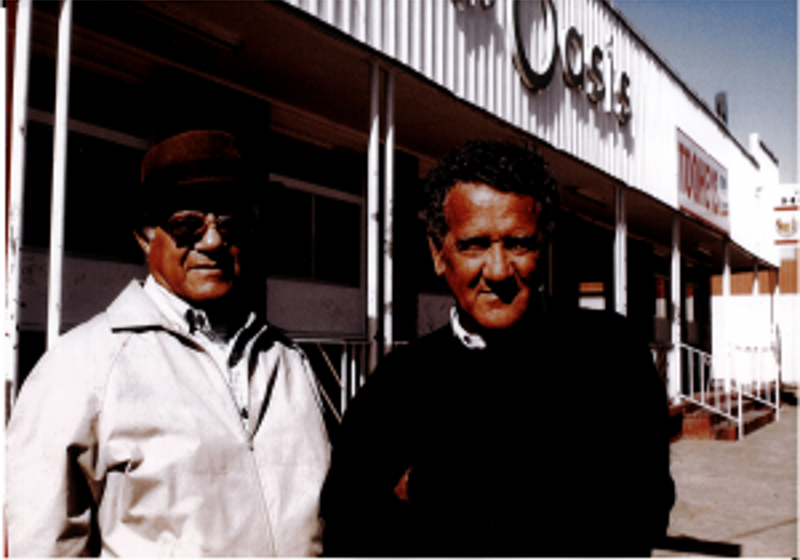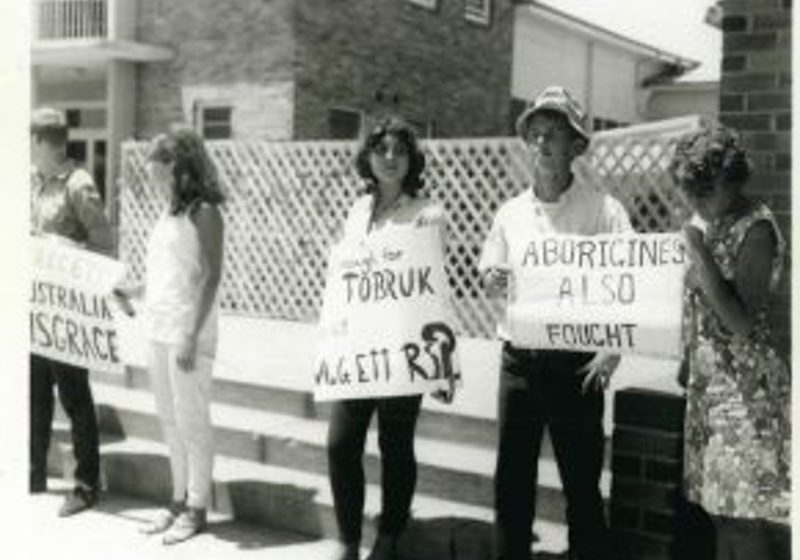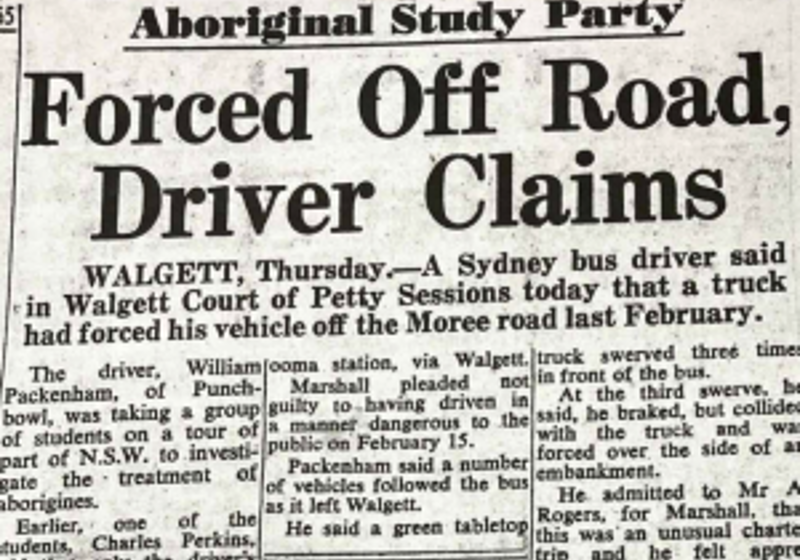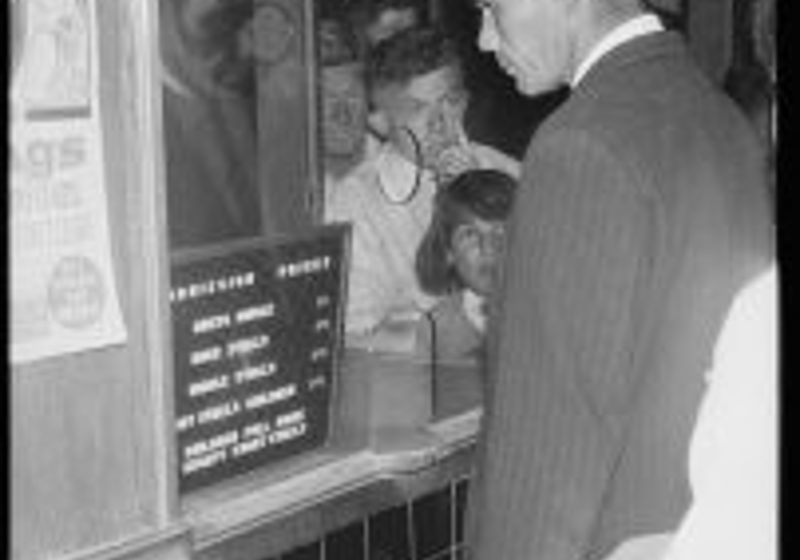Exhibits

Harry Hall with Charles Perkins in front of the Oasis. (Courtesy of Mary Hall.)
The Beginning
The arrest of two 9 year old Aboriginal boys for a petty theft in Walgett in 1964, brought the attention of wider public to its extreme racism and segregation of Aboriginal people, the Gamilaraay and the Yuwaalaraay and the nearby Waiylwan. Sydney based Aboriginal-Australian Fellowship (AAF) had since the 1950s kept an eye on the town, but now the mood had shifted with increasing social radicalism. Following a visit to Walgett, the Union representatives and the AAF members publicised the case and lobbied to return the children to their families. Sydney university students also became aware of Walgett. Meanwhile, Walgett Aborigines Progressive Association (APA) with Harry Hall as president, connected with Sydney activists.

SAFA students demonstrating in front of the Walgett RSL. (Courtesy of Pat Healy.)
The Demonstrations
Walgett was the site of the first Freedom Ride demonstration. The students stood in front of the local RSL that segregated Aboriginal people and did not allow Aboriginal war veterans to join as members. Led by Charles Perkins, the Student Action for Aborigines (SAFA) organised a bus tour with the aim of gathering information and to bring media attention to racism in regional New South Wales in February 1965. Walgett was included as ‘the high water mark of racism’. As the students stood challenged and abused by local whites while demonstrating in Walgett, local Murri women spoke up to witness the RSL preventing Aboriginal people from entering. Other restaurants in Walgett also segregated Aboriginal customers and Harry Hall and Ted Fields had been protesting against their exclusion for some time and continued until they broke the bans.

Sydney Morning Herald, 28 April 1965
The Response
The students’ demonstration triggered intense hostility among many of the white people in Walgett. Phillip Hall, with his friends, learnt about the local graziers’ plans to target the bus. They decided to organise a convoy of cars to follow the students safely out of town that night. Earlier the students had been told they were not welcome to stay another night at the Anglican Church Hall. On Moree Road the bus was followed by a truck, which pulled next to the bus and after several attempts drove it off the road. Soon the bus was surrounded by the convoy of cars organised by Phillip Hall to ensure that the students were safe. The students returned to Walgett to report the incident at the police station where a local Aboriginal woman, Pat Walford, observing the white townspeople in Walgett hurling abuse on the students, gave a powerful speech. “It hurts you white people in Walgett to see the whites from Sydney up here and do that to you, doesn’t it. Trouble is it is hurting to see other whites fighting for the Blacks.”

Ted Fields buying a ticket at the Luxury Theatre (Mitchell Library, State Library of New South Wales and Courtesy Tribune/SEARCH Foundation)
The Beginning of Change
After visits between Sydney and Walgett a plan was made to desegregate the local cinema, the Luxury Theatre, where Aboriginal customers were only allowed to sit in the front row of the theatre on “the two-bob seats”. In August 1965 Harry Hall with his daughter Pattie, niece Lorna Hall, and Marie Peters together with Ted Fields and four SAFA students were sold tickets to the upstairs section of the cinema, but they were not allowed in. They refused to leave the cinema and were arrested by the police. After negotiation between the activists, the police and the cinema owner, a week later more students and members of the Sydney APA arrived. Under the watchful eye of several hundred people and the police, Harry Hall and Ted Fields were sold tickets and allowed in the whites only section of the cinema.